This post contains affiliate links, which means I will make a commission at no extra cost to you should you click through and make a purchase. As an Amazon Associate I earn from qualifying purchases.
Wondering how to grow tulips indoors? Check out these tips for growing tulips indoors for beginners.

How To Grow Any Types Of Tulips Indoors In Any Type Of Container
Flowering tulips are one of the most beautiful sights in springtime. No matter what climate you live in you can grow a colorful pot of blooming tulips indoors.
Indoor tulips can be "forced" to flower if they are planted in pots and given an artificially-cold winter in your refrigerator while their roots grow.
Select your favorite colors and shapes of tulips from bulb catalogs or at your local garden center. Find pots that are deep enough to hold the tulip bulbs plus four inches for potting soil and watering space. The tulips will reward you with a dramatic show.
How to Grow Tulips Indoors in a Pot
Place 2 inches of soil in the bottom of a pot.
Rest a tulip bulb in the soil, pointed-end up, with the flat side of the bulb facing the inside of the pot. This ensures that the tulip leaves will arch out over the edge of the pot.
Pack the tulip bulbs close together in the pot for an optimal display.
Add potting soil above the bulbs, filling to within 1 inch of room below the rim of the pot.
Water the pot thoroughly.
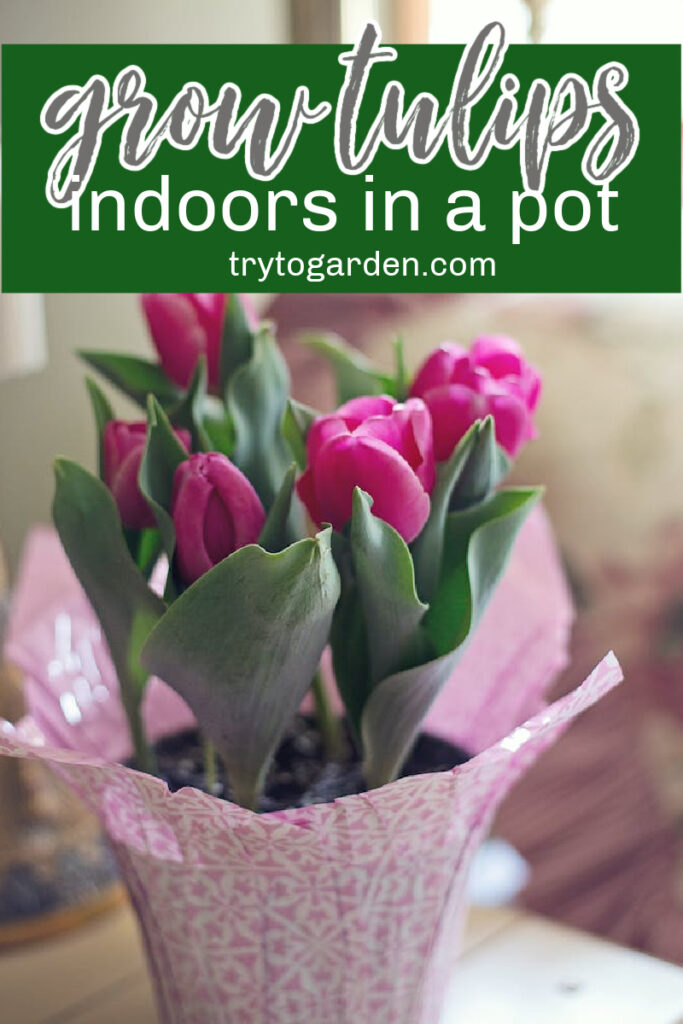
Chilling The Potted Tulip Bulbs Is A Good Idea For The Right Conditions
Chill the potted tulip bulbs in the vegetable section of your refrigerator for 14 to 20 weeks.
Bring the pot into a cool room, about 60 degrees, and place it in indirect light for two weeks.
Water the pot thoroughly and continue to keep the soil moist in the chilling period.
Warming The Bulbs For Blooming Of Your Indoor Plants Is The Best Way
Take the pot to a sunny, warm location when the green tips of the tulips are four to 6 inches tall. The sun and warmth of a sunny window will accelerate the tulip's growth.
Move the pot to an area with indirect light when you first see color in the tulip buds. This will prolong the life of the blooms. Keep the tulip pot out of indirect light when the flowers are blooming.
Cut the stem of the tulip off at the base after the flower fades.
Continue to water the pot as long as the leaves are green. But do not excess water.
Tips And Warnings For Potted Tulips
Tulips can only be forced to bloom indoors once. If you have the proper climate for growing tulips outdoors you can re-plant the forced bulbs in your garden in the fall.
Choose good quality, large-sized tulip bulbs from reputable garden centers or nurseries.
If using clay pots, soak the pots in water before planting so the clay does not draw moisture from the planting medium.
Do not add additional balanced fertilizer to the soil. The bulbs contain enough bulb food to nourish the growing plants.
To have successful indoor tulip blooms, plant several pots with bulbs and remove them from cold storage every two weeks.
If you buy the bulbs and can't plant them immediately, store them in a cool place with temperatures between 35 to 55 degrees F, according to Clemson University horticulturalists Bob Polomski and Al Pertuit.
Avoid mixing different varieties of tulips in the same pot. Bulbs may have different flowering dates.
After removing the tulips from their cold area, avoid placing them in direct sunlight.
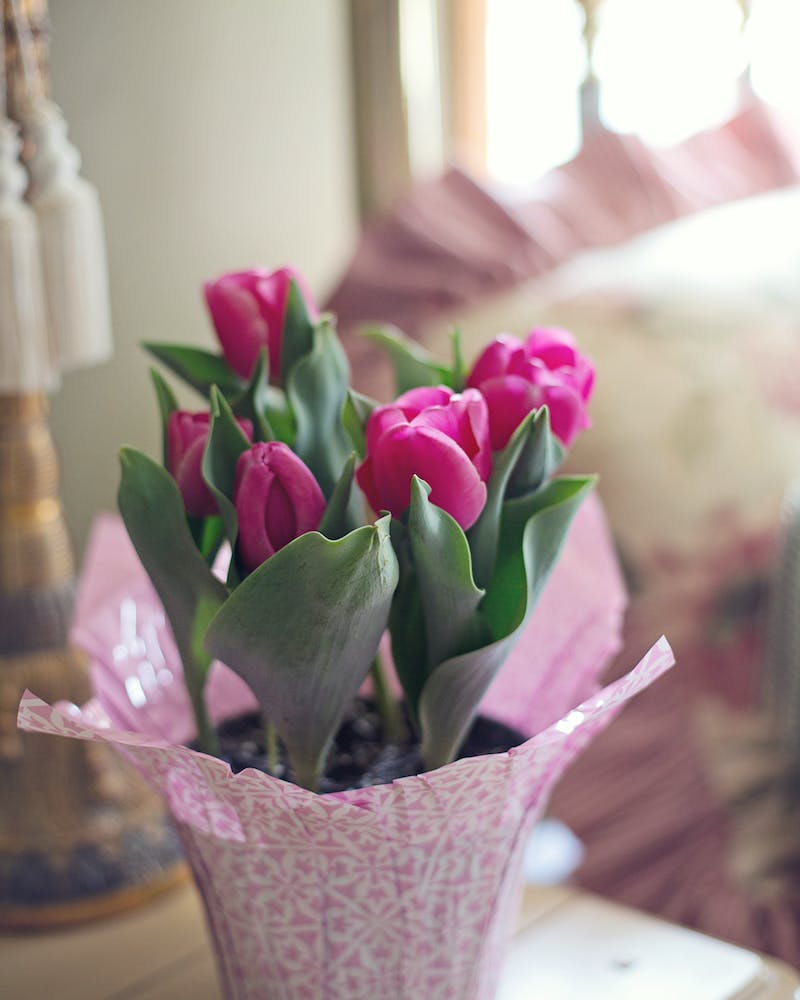
How To Take Care Of This Beautiful Flower
Tulips grow from bulbs and produce colorful, cup-shaped flowers as spring temperatures increase and the days get longer.
They have been cultivated in Turkey for over 1000 years. By growing the bulbs indoors, a technique known as forcing, you can bring their flowering period forward and have colorful tulips in flower during the winter. Choose top-quality tulip bulbs for forcing.
Things You'll Need For The Best Results
A plastic pot or any large container
Compost
Sand
Instructions For Planting Time
Plant your tulip flower bulbs in September or October in sterile plastic pots and free-draining compost. The University of Minnesota recommends a mixture of three parts garden loam, two parts peat moss, and one part sand. Bury the bulbs of the tulip plant so that the pointed growing tip sticks out above the surface of the well-drained soil.
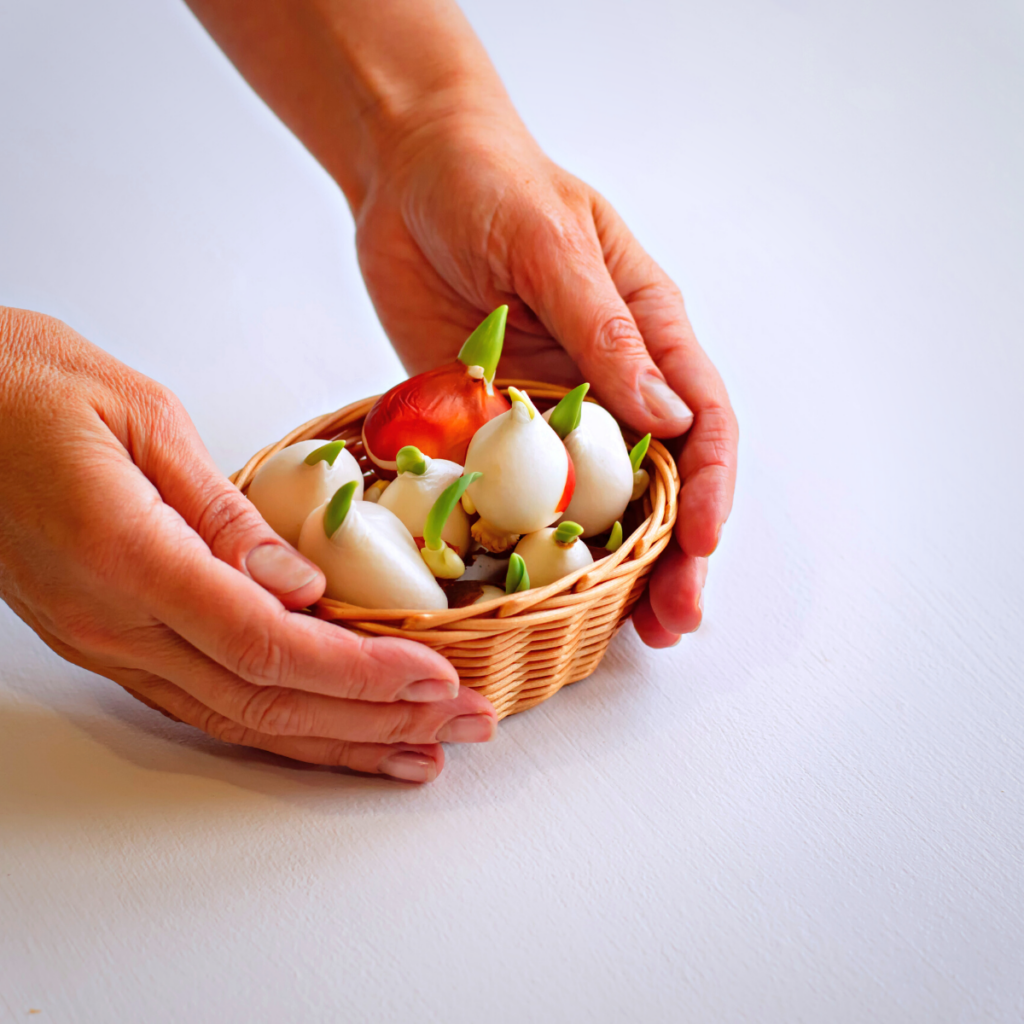
Orient the tulips bulbs with their flat side facing the outside of the pot. This means that the largest leaf produced by each bulb will be on the outside of the pot, producing a more attractive display. Water your spring bulbs as soon as they are planted.
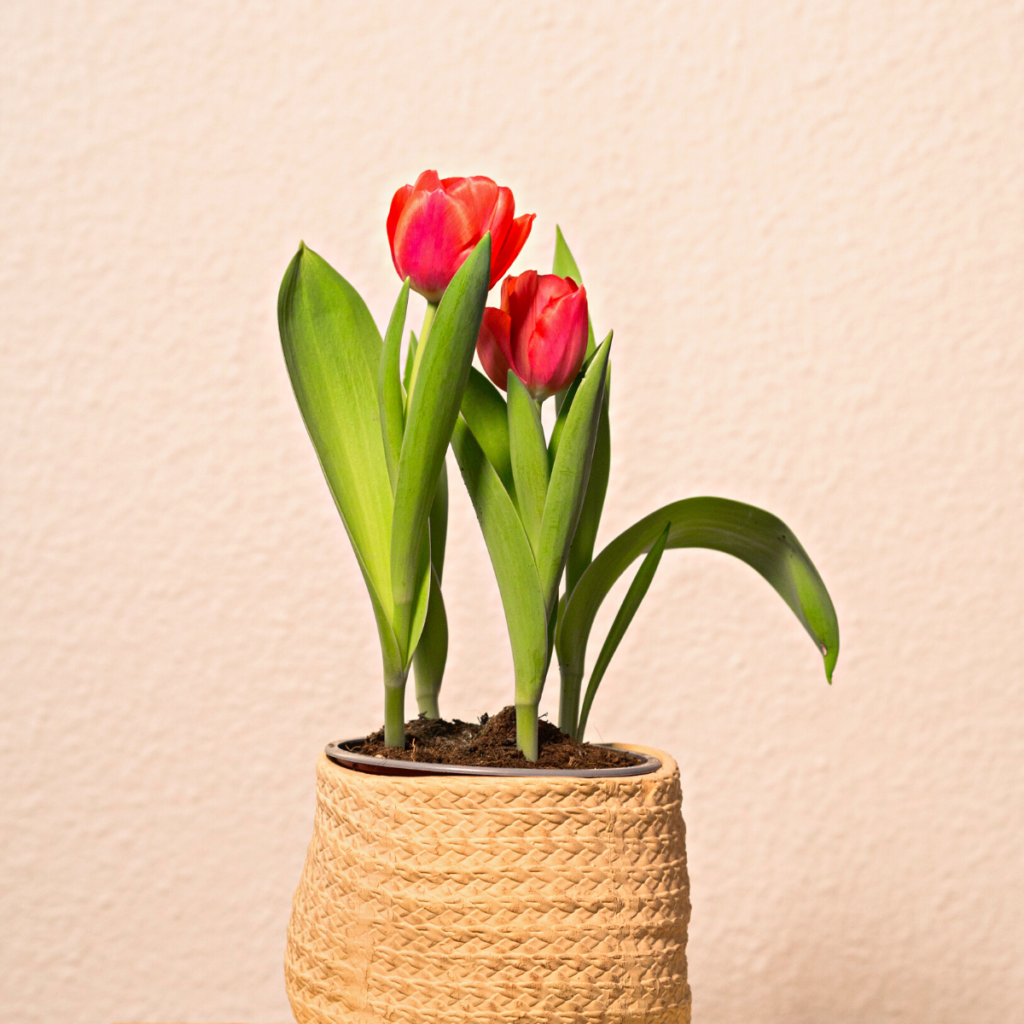
Place your pots of tulips in an unheated attic, an unheated garage, a dry location, outdoor cold frame, or in the refrigerator for at least 12 weeks or until they develop yellow shoots. Keep them in complete darkness with their fast-draining soil moist during this period.
Move your bulbs into a room no warmer than 50 degrees Fahrenheit and place them on a north or east-facing windowsill that receives indirect sunlight. Keep the soil moist. By moving pots out of cold storage at weekly intervals you can have tulip flowers in your home throughout the winter.
How much sun do indoor tulips need?
Move your tulips to a bright location such as a south-facing windowsill once the shoots have turned green. Keep the soil evenly moist and turn the pots every other day to encourage even growth. Your forced tulips will flower within a month.
Keep your tulips out of direct sunshine and move them into a cool room at night to extend the life of the flowers.
Remove the flowers once they have faded but keep watering your tulips. Leave the plants on a full sun windowsill until the leaves have turned yellow. Forced tulips can be planted out in the garden but are unlikely to flower the following year.
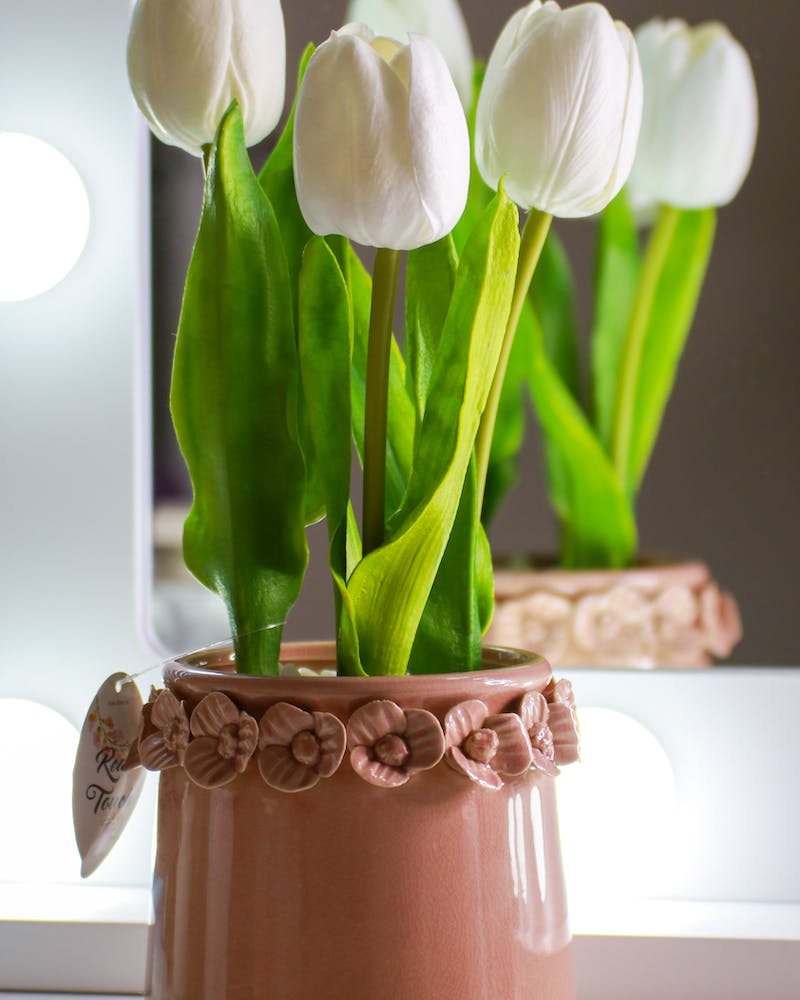
Tips & Warnings
Plant one tulip bulb per inch of pot diameter.
Tulip Species
Tulip specie knowledge breeds confidence about what kind to plant, which in turn, ensures that you never run out of color in your garden. Knowing tulip species and classification (what category the specie falls under) helps you keep a variety of flowers blooming throughout spring. While new bulbs of tulips mainly prefer cooler temperatures, a few species thrive in hot, dry climates.
Early Spring
Kaufmanniana tulips show their brilliant color when placed in rock gardens and inside container pots, according to Iowa State University. These tulips also catch the eye when placed along borders.
Kaufmanniana tulips bloom in early spring. Different kinds include Ancilla, Heart's Delight, and Johann Strauss. Fosteriana tulips flower during the early spring and thrive in USDA plant zones 3 through 8. Red, Golden, and White emperors are types of Fosteriana tulips. The Fosteriana Sweetheart blooms in a yellowish lemon color with white tips.
Mid Spring
Darwin Hybrid, Triumph, and Parrot tulips flower during the middle of spring. Darwin Hybrid blooms in bright red, pink, yellow, and orange. The Triumph tulip holds the title for having the most color and shade combination, according to Iowa State University. Salmon Jewel, a type of Triumph tulip, has pink and purple flowers. Parrot tulips grow best in protected areas because they are rather delicate, according to Iowa State University. Parrot tulips include Apricot, Fantasy, Flaming, and Black.
Late Spring
Single and double late tulips flower in late spring. Single late varieties include breeder and cottage tulips. And, single late tulips reach a height of up to 30 inches tall. Double late tulips sometimes go by "peony-flowered tulips," according to Iowa State University. Plant these flowers in secure locations because strong winds from storms have a reputation for damaging them. Lily-flowering tulips resemble lilies. Colors range from white to purple. Stresa, a type of lily-flowering tulip, blooms in yellow and red.
Warm Weather
Botanical tulips (or species tulips) can tolerate hot and dry summers. They need plenty of sunshine along with soil that can drain fast. Give these plants a bit of moisture while they bloom and during the summer. Types include Tulipa Humilis, Eastern Star, Tulipa praestens "Unicum" and Tulipa Tarda.
The Eastern Star blooms in bright pink. The plant contains a blossom that's shaped like a six-pointed star. Tulipa praestens "Unicum's" unique features include the plant's shiny gray color and a flower shaped like a cup. The Tulipa Tarda grows 4 to 6 inches tall and has a star-shaped bloom.
Now that you know how to grow tulips indoors, it can be a rewarding pastime especially in the winter when your flower garden is asleep.

Joyce says
Tulips are my favorite flower!
Years ago while visiting my sister in Perth, Australia she took me to a tulip festival in the hills near her home and it was amazing!!! Thousands of tulips all flowering at once. It is such a special memory I have of her! Sat drinking coffee overlooking beautiful flowers.
I am not much of a grower but I am definitely going to give this a go! I never knew you had to keep the bulbs in the cold. So I am going to start now ready for spring.
Ellen Lafleche-Christian says
So glad you enjoyed the article!